History
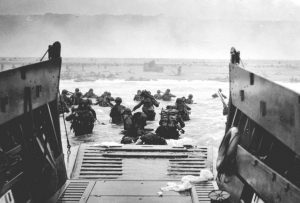 Most people from the Baby Boomer Generation know the significance of D-Day, but it occurs to me that many people in the younger generations may not really know what it was all about. Operation Overlord was the Allied invasion of northern France, commonly known as D-Day. The operation was under the direction of Supreme Allied Commander General Dwight D. Eisenhower. The operation had a brief 3 day window in which to take place, and June 5th had been chosen to be the day, but the day dawned gloomy, so the operation had to be scrubbed for the day.
Most people from the Baby Boomer Generation know the significance of D-Day, but it occurs to me that many people in the younger generations may not really know what it was all about. Operation Overlord was the Allied invasion of northern France, commonly known as D-Day. The operation was under the direction of Supreme Allied Commander General Dwight D. Eisenhower. The operation had a brief 3 day window in which to take place, and June 5th had been chosen to be the day, but the day dawned gloomy, so the operation had to be scrubbed for the day.
Then on June 6th, the orders came down that Operation Overlord was a go. By daybreak, 18,000 British and American parachutists were already on the ground. An additional 13,000 aircraft were mobilized to provide air cover and support for the invasion, among them the B-17, Raggedy Ann, which was carrying my dad, Allen Spencer, who was a Top Turret Gunner and Flight Engineer. At 6:30 am, American troops came ashore at Utah and Omaha beaches. The British and Canadians overcame light opposition to capture Gold, Juno and Sword beaches, as did the Americans at Utah. Omaha beach was a much different situation, however, where the US First Division battled high seas, mist, mines, burning vehicles, and German coastal batteries, including an elite infantry division, which spewed heavy fire. Many wounded Americans ultimately drowned in the high tide. British divisions, which landed at Gold, Juno, and Sword beaches, and Canadian troops also met with heavy German fire.

The troops persevered, even though the loses were great, and in the end the operation was declared a victory. There were many reasons that D-Day was successful, even against all odds. The Allies had fooled the Germans, who thought the attack was going to occur farther along the coast at Calais because this was the shortest route by sea, even when the attack began on the beaches Hitler was still convinced the attack was going to occur at Calais. What a shock that must have been when he found out that the attack took place on the beaches of Normandy. False intelligence spread by the allies spread false information to the Germans, and they bought it.
There were many factors that all worked together to make the plan work. Wooden guns on the South Coast of England, wooden planes, dropped plastic dummies out of planes, they put mirrors up on their ships and the Germans were fooled as they saw themselves going the other way. New technology specifically designed for the landing enabled the Allies to gain an advantage over the Germans. Mulberries, the floating docks the Allies used to land, enabled the Allies to land safely and disembark while firing. Some of the beaches were practically empty, however, on Omaha beach the Allies suffered heavy losses numbering 2000 in total. Operation Overlord had been planned for many years and so they were ready. The Germans had to keep control of the other parts of their empires, so their troops were elsewhere. Hitler denied that his forces were losing in Normandy, and  would not authorize the mobilization of forces stationed near Normandy.
would not authorize the mobilization of forces stationed near Normandy.
As for the Allies, the troops involved were highly trained, equipped and motivated. Their battle plan was well prepared. All the necessary manpower and logistics were available to them. The air space was controlled by the Allies. The sea lanes were very short and the seas were in Allied hands. The deception plan was flawless. The Germans had no idea what was coming. The French Resistance was highly effective. The German troop who were there were poorly motivated. Hitler’s Defense Planning was completely flawed. But, the biggest victory is that the troops did their job.
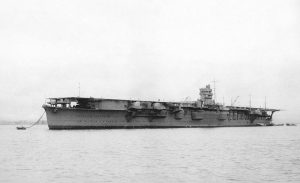 The Japanese had a tendency to be sneaky about their weapons of warfare, and their attack plans, as we know from Pearl Harbor. One such well kept secret was the Hiryu…which means Flying Dragon. The ship was a modified Soryu design that was built exclusively for the Imperial Japanese Navy. The Soryu, which means Blue Dragon, was built first, and because of the heavy modifications, the Hiryu was almost considered to be a separate class of ship. Hiryu had a displacement of 17,600 tons, length of 746 feet 1 inch, beam of 73 feet 2 inches, draft of 25 feet 7 inches and a speed of 34 knots. Built in 1931, “these two ships became prototypes for almost all subsequent Japanese carriers. They had continuous flight deck, two-level hangar, small island superstructure, two deflexed down and aft funnels and three elevators. As a whole ship design (within the limits of displacement assigned on it) has appeared rather successful, harmoniously combining high speed with strong AA armament and impressive number of air group.” The Hiryu, unlike the small height hangar levels of the Soryu, was built to an advanced design. “Her freeboard height was increased by one deck, island was transferred to a port side (Hiryu became second after Akagi and last Japanese carrier with an island on a port side). Breadth of a flight deck was increased on 1m, a fuel stowage on 20%. She had a little strengthened protection: belt thickness abreast machinery raised to 48mm.”
The Japanese had a tendency to be sneaky about their weapons of warfare, and their attack plans, as we know from Pearl Harbor. One such well kept secret was the Hiryu…which means Flying Dragon. The ship was a modified Soryu design that was built exclusively for the Imperial Japanese Navy. The Soryu, which means Blue Dragon, was built first, and because of the heavy modifications, the Hiryu was almost considered to be a separate class of ship. Hiryu had a displacement of 17,600 tons, length of 746 feet 1 inch, beam of 73 feet 2 inches, draft of 25 feet 7 inches and a speed of 34 knots. Built in 1931, “these two ships became prototypes for almost all subsequent Japanese carriers. They had continuous flight deck, two-level hangar, small island superstructure, two deflexed down and aft funnels and three elevators. As a whole ship design (within the limits of displacement assigned on it) has appeared rather successful, harmoniously combining high speed with strong AA armament and impressive number of air group.” The Hiryu, unlike the small height hangar levels of the Soryu, was built to an advanced design. “Her freeboard height was increased by one deck, island was transferred to a port side (Hiryu became second after Akagi and last Japanese carrier with an island on a port side). Breadth of a flight deck was increased on 1m, a fuel stowage on 20%. She had a little strengthened protection: belt thickness abreast machinery raised to 48mm.”
Hiryu took part in Japanese invasion of French Indochina (Now Vietnam, Cambodia and Laos) in mid 1940s, the attack on Pearl Harbor and the Battle of Wake Island. The ship became a great enemy of the Allies. Then, along with three other fleet carriers, Hiryu participated in the Battle of Midway Atoll in North Pacific Ocean in June 1942. Initially, the Japanese forces managed to bombard US forces on the atoll. It didn’t look good for the 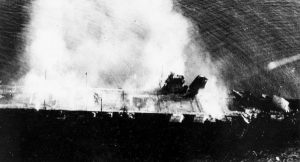 Allies, but on June 4, 1942, the Japanese aircraft carriers were attacked by dive-bomber aircraft from USS Enterprise, USS Yorktown, USS Hornet, and Midway Atoll. Hiryu was hit and severely crippled, and was set on fire. Japanese destroyer Makigumo torpedoed Hiryu on June 5, 1942 at 05:10 am, because she could not be salvaged. Only 39 men survived as after 4 hours, she sank with bodies of 389 men. Three other Japanese carriers were also sunk during the Battle of Midway. It was a battle that brought Japan’s first naval defeat since the Battle of Shimonoseki Straits in 1863. It was a great day for the Allies.
Allies, but on June 4, 1942, the Japanese aircraft carriers were attacked by dive-bomber aircraft from USS Enterprise, USS Yorktown, USS Hornet, and Midway Atoll. Hiryu was hit and severely crippled, and was set on fire. Japanese destroyer Makigumo torpedoed Hiryu on June 5, 1942 at 05:10 am, because she could not be salvaged. Only 39 men survived as after 4 hours, she sank with bodies of 389 men. Three other Japanese carriers were also sunk during the Battle of Midway. It was a battle that brought Japan’s first naval defeat since the Battle of Shimonoseki Straits in 1863. It was a great day for the Allies.
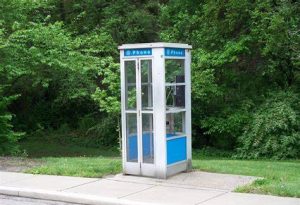 The current generation of kids probably have no idea what a phone booth is, besides maybe a place for Superman to change into his costume. From the time phones first became something that was provided to the public for a fee, phone booths became a common sight on city streets. Then in the 1950s, a new fad began. Much like the fad of stuffing as many people as possible into a car, people decided to stuff as many people as possible into a phone booth. My guess is that like most of these strange fads, this one too,
The current generation of kids probably have no idea what a phone booth is, besides maybe a place for Superman to change into his costume. From the time phones first became something that was provided to the public for a fee, phone booths became a common sight on city streets. Then in the 1950s, a new fad began. Much like the fad of stuffing as many people as possible into a car, people decided to stuff as many people as possible into a phone booth. My guess is that like most of these strange fads, this one too,  was practiced mostly by young people.
was practiced mostly by young people.
Phone booth stuffing first gained popularity outside the United States, but once it arrived stateside, in spring 1959, kids couldn’t help but join in. Basically, people would cram their bodies into the narrow spaces like sardines in a can. Some adopted other methods, such as stacking themselves horizontally. Just imagine being the guy on the bottom of the stack. All I can say is, “Hurry up, because I can’t breathe!!”
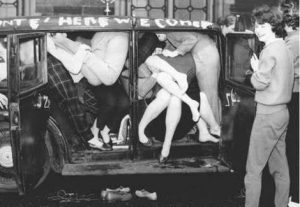 As with so many other crazy fad, phone booth stuffing became something to set a world record for. People began trying to outdo the prior record. The word record for phone-booth stuffing came in March 1959, when 25 people in South Africa piled into a booth. I can’t imagine how they could possibly fit 25 people in a phone booth, but while they were all in there, the phone rang. Of course, nobody answered the phone, because nobody could move enough to reach it. Sadly, the trend died by the end of 1959. Of course, that doesn’t mean that some of the other stuffing trends didn’t continue. I think people are still stuffing as many people as they can into a car. I just hope they don’t try to drive that way.
As with so many other crazy fad, phone booth stuffing became something to set a world record for. People began trying to outdo the prior record. The word record for phone-booth stuffing came in March 1959, when 25 people in South Africa piled into a booth. I can’t imagine how they could possibly fit 25 people in a phone booth, but while they were all in there, the phone rang. Of course, nobody answered the phone, because nobody could move enough to reach it. Sadly, the trend died by the end of 1959. Of course, that doesn’t mean that some of the other stuffing trends didn’t continue. I think people are still stuffing as many people as they can into a car. I just hope they don’t try to drive that way.
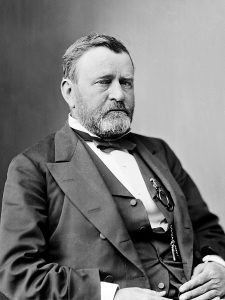 Often we think that the best course of action is to simply attack a problem head on, but that is not always true, as Union General Ulysses S. Grant would find out on June 3, 1864. The United States was deep into the Civil War, and on that particular day, and the Confederate Army was entrenched at Cold Harbor, Virginia. General Grant was about to make the greatest mistakes of his career.
Often we think that the best course of action is to simply attack a problem head on, but that is not always true, as Union General Ulysses S. Grant would find out on June 3, 1864. The United States was deep into the Civil War, and on that particular day, and the Confederate Army was entrenched at Cold Harbor, Virginia. General Grant was about to make the greatest mistakes of his career.
Since the battle began on May 31st, Grant’s Army of the Potomac and Robert E. Lee’s Army of Northern Virginia had inflicted frightful losses upon each other as they worked their way around Richmond, Virginia…from the Wilderness forest to Spotsylvania and numerous smaller battle sites…the previous month. On May 30, Lee and Grant collided  at Bethesda Church. The next day the battle began when the advance units of the armies arrived at the crossroads of Cold Harbor, which was just 10 miles from Richmond, Virginia. There, a Yankee attack seized the intersection. Grant decided that this was the perfect chance to destroy Lee at the gates of Richmond, Grant prepared for a major assault along the entire Confederate front on June 2nd, but his plan was delayed because the necessary troops…Winfield Hancock’s Union corps did not arrive on schedule, the operation was delayed until the following day.
at Bethesda Church. The next day the battle began when the advance units of the armies arrived at the crossroads of Cold Harbor, which was just 10 miles from Richmond, Virginia. There, a Yankee attack seized the intersection. Grant decided that this was the perfect chance to destroy Lee at the gates of Richmond, Grant prepared for a major assault along the entire Confederate front on June 2nd, but his plan was delayed because the necessary troops…Winfield Hancock’s Union corps did not arrive on schedule, the operation was delayed until the following day.
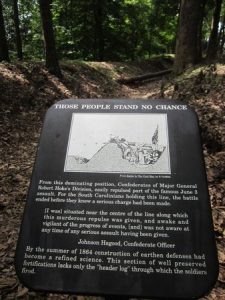
The delay was a tragic move for the Union army, because it gave Lee’s troops time to entrench. Grant was frustrated with the prolonged pursuit of Lee’s army, so he gave the order to attack on June 3, but the entrenched Confederate army had the protection of deep trenches atop a hill, making the Union army have to attack without cover. It was a decision that resulted in a complete disaster. The Yankees were met with murderous fire, and were only able to reach the Confederate trenches in a few places. The 7,000 Union casualties, compared to only 1,500 for the Confederates, were all lost in under an hour. A dejected Grant pulled out of Cold Harbor nine days later and continued to try to flank Lee’s army. His next stop was Petersburg, south of Richmond, where he forced a nine-month siege. While Petersburg would redeem him some, there would be no more attacks on the scale of Cold Harbor.
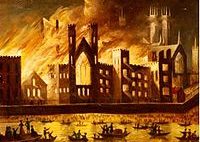
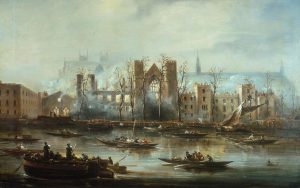 I think most people have heard of Big Ben, the famous clock tower in London, but what you may not know is that originally, there was no clock and no tower. The Houses of Parliament and Elizabeth Tower, most often called Big Ben, are among London’s most iconic landmarks and favorite London attractions. Big Ben is actually the name that was given to the massive bell inside the clock tower, which weighs more than 13 tons, not to the clock or the tower. At night the four clock faces are illuminated, and the effect is spectacular.
I think most people have heard of Big Ben, the famous clock tower in London, but what you may not know is that originally, there was no clock and no tower. The Houses of Parliament and Elizabeth Tower, most often called Big Ben, are among London’s most iconic landmarks and favorite London attractions. Big Ben is actually the name that was given to the massive bell inside the clock tower, which weighs more than 13 tons, not to the clock or the tower. At night the four clock faces are illuminated, and the effect is spectacular.
The British Parliament is located in the Palace of Westminster. In October of 1834, a fire destroyed much of the palace and it had to be rebuilt. At that time it was decided that there would be an spectacular addition of a clock at the top of a tower. The clock is magnificent. Each dial measures almost 23 feet in diameter. The hands are 14 feet long and weigh about 220 pounds, including counterweights. The numbers on the clock’s face are approximately 23 inches long. There are 312 pieces of glass in each clock dial. When parliament is in session, a special light above the clock faces is illuminated. Big Ben’s timekeeping is strictly regulated by a stack of coins placed on the huge pendulum. Big Ben has rarely stopped. Even after a bomb destroyed the Commons chamber during World War II, the clock tower survived and Big Ben continued to strike the hours. The chimes of Big Ben were first broadcast by the BBC on December 31, 1923. It is a tradition that continues to this day. The Latin words under the clock face read Domine Salvam Fac Reginam Nostram Victoriam Primam, which means “O Lord, keep safe our Queen Victoria the First.” In June 2012 the House of Commons announced that the clock tower was to be renamed the Elizabeth Tower in honor of Queen Elizabeth II’s Diamond Jubilee.
A massive bell was required and the first attempt made by John Warner and Sons at Stockton-On-Tees cracked irreparably. Big Ben first rang across Westminster on May 31, 1859. A short time later, in September 1859, Big 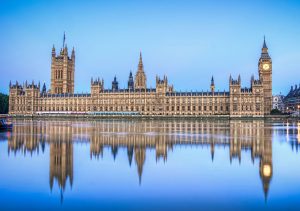
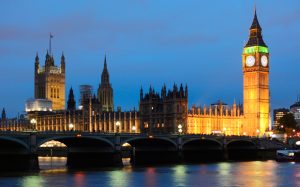 Ben cracked. The metal was melted down and the bell recast in Whitechapel in 1858. A lighter hammer was fitted and the bell rotated to present an undamaged section to the hammer. This is the bell as we hear it today, and the real owner of the name Big Ben. Elizabeth Tower stands at more than 105 yards tall, with 334 steps to climb up to the belfry and 399 steps to the Ayrton Light at the very top of the tower.
Ben cracked. The metal was melted down and the bell recast in Whitechapel in 1858. A lighter hammer was fitted and the bell rotated to present an undamaged section to the hammer. This is the bell as we hear it today, and the real owner of the name Big Ben. Elizabeth Tower stands at more than 105 yards tall, with 334 steps to climb up to the belfry and 399 steps to the Ayrton Light at the very top of the tower.
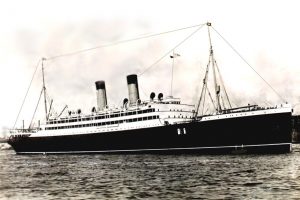 Two years after the sinking of the Titanic, the world was still very aware of the dangers of travel by ship. The Titanic was supposed to be unsinkable, and yet on April 14, 1912, it took more than 1500 people to the bottom of the Atlantic Ocean with it. Many safety precautions had changed since Titanic went down. The ship’s radio room had to be manned at all times, crews were trained extensively in emergency procedures, and ships were equipped more than enough lifejackets and lifeboats. Every precaution that they knew to take had been taken, making The Empress of Ireland one of the safest ships on Earth.
Two years after the sinking of the Titanic, the world was still very aware of the dangers of travel by ship. The Titanic was supposed to be unsinkable, and yet on April 14, 1912, it took more than 1500 people to the bottom of the Atlantic Ocean with it. Many safety precautions had changed since Titanic went down. The ship’s radio room had to be manned at all times, crews were trained extensively in emergency procedures, and ships were equipped more than enough lifejackets and lifeboats. Every precaution that they knew to take had been taken, making The Empress of Ireland one of the safest ships on Earth.
On May 29, 1914, The Empress of Ireland left Quebec Harbor on a  transatlantic journey to Liverpool England. She was sailing in heavy fog down Canada’s Saint Lawrence River, carrying 1477 passengers and crew. The Norwegian freighter Storstad was also sailing on the Saint Lawrence River on that fateful day. Sailing in heavy fog, without the modern GPS equipment to keep everyone informed of the ships’ positions, is a seriously dangerous undertaking. I don’t know that the normal protocol was for sailing in fog, but it would make sense to me that they should drop anchor and wait for the fog to lift before continuing on. I’m sure that these days, the ships would have some kind of protocol.
transatlantic journey to Liverpool England. She was sailing in heavy fog down Canada’s Saint Lawrence River, carrying 1477 passengers and crew. The Norwegian freighter Storstad was also sailing on the Saint Lawrence River on that fateful day. Sailing in heavy fog, without the modern GPS equipment to keep everyone informed of the ships’ positions, is a seriously dangerous undertaking. I don’t know that the normal protocol was for sailing in fog, but it would make sense to me that they should drop anchor and wait for the fog to lift before continuing on. I’m sure that these days, the ships would have some kind of protocol.
The Empress and the Storstad spotted each other several minutes before the inevitable collision, but altered 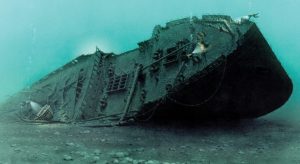 courses and confused signals brought them into the fateful moment of impact. I suppose that if each ship hadn’t moved in the same direction, they might have been able to avoid the collision, but unfortunately they did move in the same direction. The Storstad penetrated 15 feet into the Empress of Ireland‘s starboard side, and the vessel sunk within 14 minutes, drowning 1,012 of its passengers and crew in the Gulf of Saint Lawrence. It was one of the worst ship disasters in history. Only seven lifeboats escaped the rapidly sinking vessel, but thanks to the efforts of the crew of the Storstad, scores of survivors were pulled out of the icy waters.
courses and confused signals brought them into the fateful moment of impact. I suppose that if each ship hadn’t moved in the same direction, they might have been able to avoid the collision, but unfortunately they did move in the same direction. The Storstad penetrated 15 feet into the Empress of Ireland‘s starboard side, and the vessel sunk within 14 minutes, drowning 1,012 of its passengers and crew in the Gulf of Saint Lawrence. It was one of the worst ship disasters in history. Only seven lifeboats escaped the rapidly sinking vessel, but thanks to the efforts of the crew of the Storstad, scores of survivors were pulled out of the icy waters.
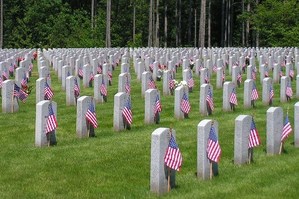
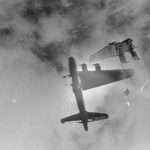 Many people think of Memorial Day as the unofficial start of summer. They plan barbecues and trips with family because they have a three day weekend. Memorial Day, however, is really a day to remember the soldiers who gave their lives fighting for our freedoms in battle. While the work of every service member, whether in battle or in peacetime, is vital, and deserves recognition, Memorial Day is not the proper day to honor every veteran…Veterans Day is the day to honor veterans who came home from war, or who served in peacetime. Many people may consider that a technicality, but when you remember that the military is an institution of protocol and discipline. Things are always done in the proper order and for the proper reasons. That is what makes the military the disciplined, capable, and highly skilled organization that it is. Of course, to those of us who have never served, there is a feeling of wanting to honor all of our service members, and we don’t see the harm in adding those who weren’t killed in action, to the same memorial as those who didn’t make it home, but we would be wrong.
Many people think of Memorial Day as the unofficial start of summer. They plan barbecues and trips with family because they have a three day weekend. Memorial Day, however, is really a day to remember the soldiers who gave their lives fighting for our freedoms in battle. While the work of every service member, whether in battle or in peacetime, is vital, and deserves recognition, Memorial Day is not the proper day to honor every veteran…Veterans Day is the day to honor veterans who came home from war, or who served in peacetime. Many people may consider that a technicality, but when you remember that the military is an institution of protocol and discipline. Things are always done in the proper order and for the proper reasons. That is what makes the military the disciplined, capable, and highly skilled organization that it is. Of course, to those of us who have never served, there is a feeling of wanting to honor all of our service members, and we don’t see the harm in adding those who weren’t killed in action, to the same memorial as those who didn’t make it home, but we would be wrong.
I have been listening to a book about the 8th Air Force in World War II. As the narrator tells the story of a bomber or fighter plane that will not be returning to base, and a crew who had a one way ticket to the war, I find myself thinking about how my dad, Allen Spencer must have felt each time the B-17 bomber, on which he was a top turret gunner, took off on another bomb run. The feeling in his gut as the plane took off, the prayers he was praying for himself and every other crew member on his and every other plane, the sickening feeling as the planes went down or exploded, and the long moments waiting and watching to see how many parachutes emerged from the stricken planes. I know that my dad and every other soldier who returned from the war, lost buddies over there. I don’t think you could ever forget those lost ones, and I don’t think you could see your way clear to honoring the living with the lost.
I know a number of soldiers, both retired and discharged, as well as some who are currently serving in the armed forces. These people know the meaning of each of the military holidays, and in fact, it was one of them 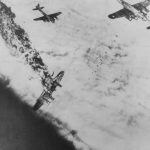
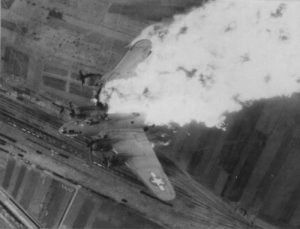 who first told me the difference between the military holidays. Once you know the difference, you really don’t feel right about celebrating the wrong way, because each holiday has its proper purpose. This memorial Day, I honor all of our fallen soldiers of any war, and I pray for the loved ones they left behind when it was known that they got just a one way ticket to war. Your loved one was a great warrior, and you have every reason to be very proud. Honoring our fallen soldiers on this Memorial Day. Rest In Peace.
who first told me the difference between the military holidays. Once you know the difference, you really don’t feel right about celebrating the wrong way, because each holiday has its proper purpose. This memorial Day, I honor all of our fallen soldiers of any war, and I pray for the loved ones they left behind when it was known that they got just a one way ticket to war. Your loved one was a great warrior, and you have every reason to be very proud. Honoring our fallen soldiers on this Memorial Day. Rest In Peace.
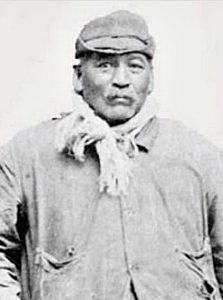 I suppose that most of the time, when someone sets out to invent something, they have a specific plan in mind, but maybe not. A number of inventors were trying to invent something completely different from what they ended up inventing, or they weren’t trying to “invent” anything at all, but ended up making something very cool.
I suppose that most of the time, when someone sets out to invent something, they have a specific plan in mind, but maybe not. A number of inventors were trying to invent something completely different from what they ended up inventing, or they weren’t trying to “invent” anything at all, but ended up making something very cool.
One day in 1853, a chef at the Carey Moon Lake House in Saratoga Springs, New York, named George Crum was at work, and making a meal for a customer. Apparently this customer was rather picky, which I can understand when it comes to certain things. The customer had ordered a plate of fried potatoes, and since my mom, Collene Spencer often made fried potatoes when I was a kid, I can attest to how great they tasted. Fried potatoes, however, must be correctly cooked to be really good, and I suppose that there are many differing views as to which way of cooking them is correct. Sometimes, its just a matter of personal preference.
Chef Crum fried the potatoes in the way he had always done so, but found that he was apparently unable to please this particular customer. Anyone who has ever worked in a restaurant knows that it is really frowned upon to have food sent back to the kitchen. The chef is given a goal of almost reading the mind of the customer…and expected to get it right. I know that this can be difficult from my own experience. I love what I would call extra crispy bacon, but when I tell them extra crispy, I usually end up with bacon that is floppy and, in my opinion, disgusting. I have long since learned that if I want to get truly crispy bacon, I must tell them that I want it burned. Only then will the bacon come out “crispy” enough for me, which, by the way, never has any black parts that would indicate that it was burned.
On this particular day, Chef Crum was having a bad day, at least from the perspective of pleasing the  customer, who sent the potatoes back many times, asking that the potatoes be thinner and crispier. Finally in a fit of temper, Chef Crum sliced the potatoes insanely thin and fried them until they were “as hard as a rock,” before sending them back out to the customer. To his astonishment, the customer absolutely loved the potatoes, and wanted more. Now, for anyone who likes potato chips, the request for seconds comes as no surprise, because it really is hard to eat just one potato chip, as the saying goes. Since that day, I’m sure that these new fangled potatoes were a menu favorite at the Carey Moon Lake House. They must have been, because as we all know, they are still available to this day, and they show no sign of losing their popularity now either.
customer, who sent the potatoes back many times, asking that the potatoes be thinner and crispier. Finally in a fit of temper, Chef Crum sliced the potatoes insanely thin and fried them until they were “as hard as a rock,” before sending them back out to the customer. To his astonishment, the customer absolutely loved the potatoes, and wanted more. Now, for anyone who likes potato chips, the request for seconds comes as no surprise, because it really is hard to eat just one potato chip, as the saying goes. Since that day, I’m sure that these new fangled potatoes were a menu favorite at the Carey Moon Lake House. They must have been, because as we all know, they are still available to this day, and they show no sign of losing their popularity now either.
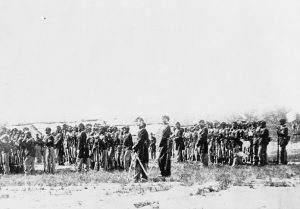
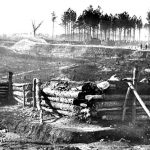 Prior to the Civil War, and even for years afterward, the black man was considered first a non-human, and secondly not very intelligent. Because of that, it was thought that the black soldiers would not be able to handle real combat situations. Nevertheless, the Union Army needed their help, and so they would have to take a chance on the black soldiers along the James River in the spring of 1864. My guess is that it was a rather tense moment when the Federal Soldiers faced off the Rebels on May 24, 1864. They stood behind the walls they had built with their own hands, and watched as the dismounted Rebel cavalry charged toward them. With their rifles trained on the enemy troops, each man knew that this was their chance to prove themselves. They were a brigade of mostly black soldiers, and it was vital that they be able to hold their own against an enemy who outnumbered them two to one. As well as an enemy who was party to their years of slavery.
Prior to the Civil War, and even for years afterward, the black man was considered first a non-human, and secondly not very intelligent. Because of that, it was thought that the black soldiers would not be able to handle real combat situations. Nevertheless, the Union Army needed their help, and so they would have to take a chance on the black soldiers along the James River in the spring of 1864. My guess is that it was a rather tense moment when the Federal Soldiers faced off the Rebels on May 24, 1864. They stood behind the walls they had built with their own hands, and watched as the dismounted Rebel cavalry charged toward them. With their rifles trained on the enemy troops, each man knew that this was their chance to prove themselves. They were a brigade of mostly black soldiers, and it was vital that they be able to hold their own against an enemy who outnumbered them two to one. As well as an enemy who was party to their years of slavery.
The battle the black troops were about to fight was a small part of Lieutenant General Ulysses S Grant’s Overland Campaign. The goal was to cripple the Confederate capital, and in doing so, bring down the Confederacy before the end of 1864. The Army of the James consisted of the X and XVIII Corps. About 40% of the army’s 33,000 men were black. Butler was confident his “colored troops” would do all the Union hoped and more, because he realized they viewed their service as a chance to gain rights they had never had before for themselves and for their families…making blacks free and equal to whites. Of course, fear of capture and a return to slavery, was a great motivator to win this battle and the war too. In early May, Butler and his army left Fort Monroe at the mouth of the James River and drove upriver toward Bermuda Hundred, about 14 miles south of Richmond. The general believed this was a better position to attack the capital from this strip of land, which lies at the point where the Appomattox River meets the James. From there, Butler’s forces could disable rail transportation south of Richmond and with it, communication between the capital and points south.
Late on the afternoon of May 5, a week before the army’s planned arrival on Bermuda Hundred, Butler reported to Grant that Brigadier General Edward A. Wild’s brigade of black troops had captured these two sites without opposition. Their arrival, Butler wrote, was “apparently a complete surprise” to the Confederates. The sight of former slaves coming ashore at Wilson’s Wharf must have almost terrified local planters, because many of the troops had once been held in bondage in the surrounding area. It could feel very intimidating to think of the former slaves motive for revenge. Shortly after the brigade’s arrival, the soldiers captured William Clopton, a wealthy planter known for his brutality. Wild, with his profound hatred of slavery, ordered his men to tie Clopton to a tree and expose his back. Then Wild ordered William Harris of Company E forward to flog his former master, Cheers echoed through the African Brigade. “Mr. Harris played his part conspicuously,” Sergeant Hatton recalled, “bringing the blood from his loins at every stroke, and not forgetting to remind the gentleman of the days gone by.” Wild described the lashing of Clopton to Hinks as “the administration of 
 Poetical justice.” The fears of the plantation owners were realized that day, but whipping the planters was the least of Wild’s concerns at Wilson’s Wharf. He immediately put his troops to work on an earthwork fortification on a bluff over the James and named it Fort Pocahontas. The walls held against Confederates, and the Union would go on to win the Civil War, but no one would again be able to say that the black soldiers couldn’t do their job, nor would they ever doubt the depth of their rage over the cruel treatment they had been subjected to by the slave owners.
Poetical justice.” The fears of the plantation owners were realized that day, but whipping the planters was the least of Wild’s concerns at Wilson’s Wharf. He immediately put his troops to work on an earthwork fortification on a bluff over the James and named it Fort Pocahontas. The walls held against Confederates, and the Union would go on to win the Civil War, but no one would again be able to say that the black soldiers couldn’t do their job, nor would they ever doubt the depth of their rage over the cruel treatment they had been subjected to by the slave owners.

 On this day, May 23, 1911, President William Howard Taft presided over a ceremony to dedicate the New York Public Library, which is the largest marble structure ever constructed in the United States. The building occupies a two-block section of Fifth Avenue between 40th and 42nd Streets. The monumental Beaux-Arts structure took 14 years to complete at a cost of $9 million. The term beaux arts (pronounced BOZE-ar) means fine arts or beautiful arts. “The Beaux-Arts “style” emanated from France, based on ideas taught at the legendary L’École des Beaux Arts (The School of Fine Arts), one of the oldest and most esteemed schools of architecture and design in Paris.” The 20th century marked a period of great growth throughout the world, and new access to learning materials was needed. The first free continuous children’s library in the United States was funded privately, and was founded in 1835 in Arlington, Massachusetts. Nevertheless, libraries were in pretty short supply when the New York Public Library opened in 1911. One day after its dedication, the library opened to the public. It is thought that about 40,000 citizens passed through to make use of a collection that already consisted of more than a million books. It was a great day in the world of education.
On this day, May 23, 1911, President William Howard Taft presided over a ceremony to dedicate the New York Public Library, which is the largest marble structure ever constructed in the United States. The building occupies a two-block section of Fifth Avenue between 40th and 42nd Streets. The monumental Beaux-Arts structure took 14 years to complete at a cost of $9 million. The term beaux arts (pronounced BOZE-ar) means fine arts or beautiful arts. “The Beaux-Arts “style” emanated from France, based on ideas taught at the legendary L’École des Beaux Arts (The School of Fine Arts), one of the oldest and most esteemed schools of architecture and design in Paris.” The 20th century marked a period of great growth throughout the world, and new access to learning materials was needed. The first free continuous children’s library in the United States was funded privately, and was founded in 1835 in Arlington, Massachusetts. Nevertheless, libraries were in pretty short supply when the New York Public Library opened in 1911. One day after its dedication, the library opened to the public. It is thought that about 40,000 citizens passed through to make use of a collection that already consisted of more than a million books. It was a great day in the world of education.
Since that time, many advances have happen in the world of books. It is a matter of debate in many circles as to whether these changes are good or bad. I settle on the side of good, because I think that if technology is available, we should take advantage of it. Many of my writer friends tell me that they love the smell of the ink on the printed page, or the feel of the book in their hands, but I guess I tend to be more on the practical side of the argument. I like my kindle, and the fact that I can carry hundreds of books around in my purse, to be available no matter where I am, and without the necessity of packing around several books. When the Kindle came out, I saw it as “the greatest thing since sliced bread.” I can own hundreds of books and I don’t have to have room to store them all. Nevertheless, as a writer, I have found that I have very little time to be a reader, and that posed a problem. I had all these books I wanted to read, but I was always trying to finish the story I was currently working on, so time was scarce.
Enter Audible.com. I had heard of Audible long before I gave it a try, but on a “girls trip” with my sister, Cheryl Masterson and my niece, Liz Masterson, I was introduced to Audible by Liz, who is a member. Liz, like me has very little time to dedicate to reading a book, but while she is editing photographs for her job as a journalism teacher, she can listen to a book. “Well,” I thought, “So can I.” So I joined and I have really enjoyed taking my daily walk, while listening to a book, or writing while listening to a book. I am a World War II history buff, and I love listening to the history of that war the most, but I have also listened to many other types of books.
Knowledge comes to us in many different forms, and while the library has been responsible for bringing a world of books to the people, without the need to spend the money on purchasing the book, it also must change with the times. People lead very busy lives, and being able to check out an audible or a digital book is a great way to continue bringing books to the world. Unfortunately, many libraries have been reluctant to accommodate this new style of reading. That is sad for them, because like it or not, the digital age is hers, and if the libraries want to move forward into the next century, they are going to have to join the modern times. I hate to see 
 buildings no longer be used as libraries, but there will always be the purist who loves the smell of ink and the feel of the pages, and there will always be schools who bring classes to the library to introduce them to the world of books, but you can’t discount the busy adult who wants to read, but doesn’t have the time. Digital books are the wave of the future that allows even the busiest adult the ability to access books and learning.
buildings no longer be used as libraries, but there will always be the purist who loves the smell of ink and the feel of the pages, and there will always be schools who bring classes to the library to introduce them to the world of books, but you can’t discount the busy adult who wants to read, but doesn’t have the time. Digital books are the wave of the future that allows even the busiest adult the ability to access books and learning.

